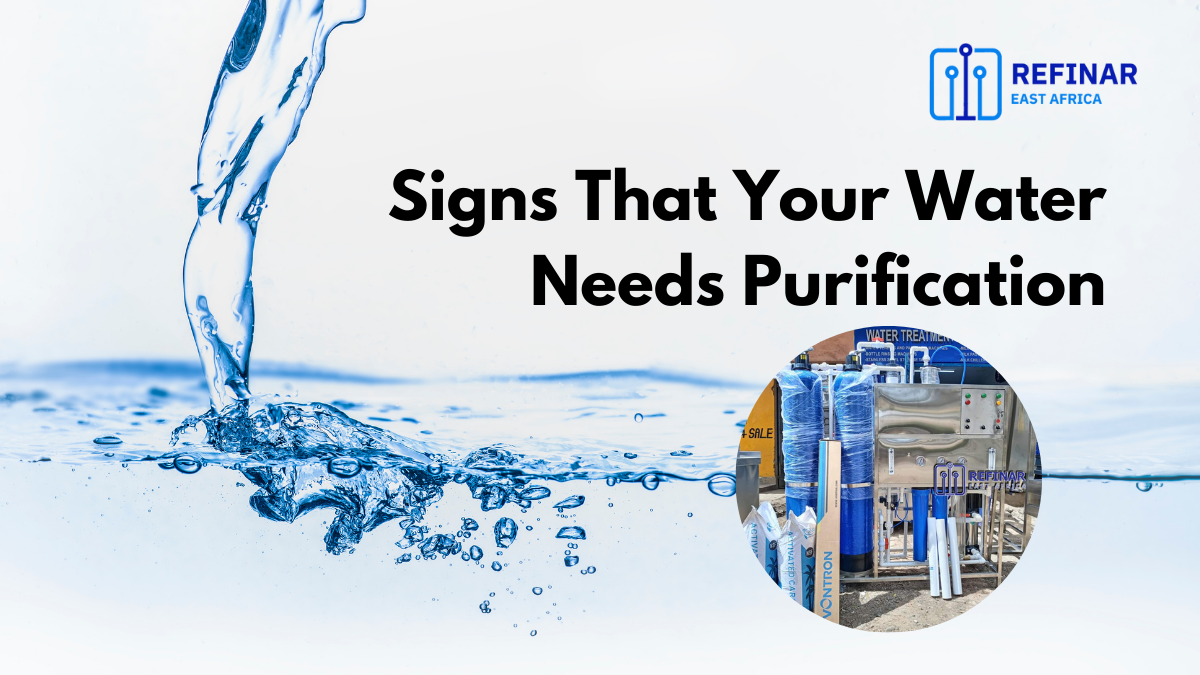Water is an essential resource in our daily lives, but maintaining its cleanliness is critical. Also, Clean water is critical to our well-being and Contaminated water can have serious consequences for health, thus, stressing the significance of regular water purification and testing. Are you concerned about the quality of your well water? Understanding the indications that signal the need for filtration is critical to preserving the safety and cleanliness of the water you consume daily. In this article, we’ll look at the primary signs that your water needs to be purified, as well as how to deal with any problems that may arise.
1. Unpleasant Odor or Taste:
If you notice a distinct and unpleasant odor or taste in your well water, it could be an indication of various contaminants. Sulfur, iron, or bacteria may be present, affecting the water’s quality.
2. Discoloration:
The presence of brown, yellow, or reddish discoloration in your well water may signal the existence of iron or manganese. Green or blue hues could be associated with specific types of bacteria.
3. Cloudiness or Turbidity:
Cloudy or turbid water may suggest the presence of suspended particles, sediment, or microbial growth in your well water, affecting its clarity.
4. Staining of Fixtures and Laundry:
Stains on sinks, toilets, and laundry can be a clear indication of mineral content in your water, such as iron or manganese. These stains not only affect aesthetics but also hint at potential water quality issues.
5. Scale Buildup:
White or chalky deposits on fixtures and appliances indicate hard water, characterized by elevated levels of calcium and magnesium. Addressing hard water is essential to prevent scale buildup and maintain the efficiency of your plumbing system.
6. Corrosion of Plumbing:
Corrosion in plumbing systems or metallic fixtures may be a sign of acidic water. Neutralizing acidity is crucial to prevent further damage to your plumbing infrastructure.
7. Bacterial Contamination:
Foul smells, slime in pipes, or instances of gastrointestinal issues among household members may point to bacterial contamination in your well water. Ensuring microbiological safety is paramount for the well-being of your family.
8. Testing Results:
Regular water testing is a proactive measure to identify specific contaminants in your well water. If it has been a while since your last test or if you observe any of the signs mentioned, scheduling a comprehensive water quality analysis is recommended.
9. Changes in Land Use or Environmental Conditions:
Keep an eye on changes in land use around your well, such as new septic systems, increased agricultural activities, or industrial development. These changes can impact the quality of your well water.
10. Health Symptoms:
Unexplained health issues among household members, such as gastrointestinal problems or skin irritation, may be linked to water consumption. Investigate these symptoms promptly and consider water quality as a potential factor.
Water Purification Methods
Various water purification methods are available to ensure the removal of contaminants and the provision of high-quality water. Here are different techniques for water purification:
Boiling:
Boiling water is one of the oldest and simplest methods of purification. By bringing water to a rolling boil for at least one minute (or three minutes at higher altitudes), many harmful bacteria, viruses, and parasites are eliminated. This method is effective but may not remove certain chemical contaminants.
Filtration:
Water filtration involves passing water through a porous substance or medium to remove impurities. Common filtration methods include activated carbon filters, ceramic filters, and membrane filters. These can effectively remove sediments, bacteria, and larger particles.
Distillation:
Distillation is a process that involves heating water to create steam, which is then cooled and condensed back into liquid form. This method effectively removes contaminants with higher boiling points, such as heavy metals and minerals. It’s particularly useful for addressing issues like lead or arsenic in water.
Reverse Osmosis:
Reverse osmosis is a water purification process that uses a semi-permeable membrane to remove ions, molecules, and larger particles from water. This method is effective in eliminating contaminants like bacteria, viruses, and dissolved salts. However, it may also remove essential minerals.
UV Purification:
UV or ultraviolet purification involves using ultraviolet light to inactivate microorganisms present in water. This method disrupts the DNA of bacteria, viruses, and other pathogens, rendering them unable to multiply. UV purification is effective against a broad spectrum of microorganisms.
Chlorination:
Chlorination is a common method used by municipal water treatment facilities. It involves adding chlorine or chlorine-based compounds to water to disinfect it and kill bacteria and viruses. While effective, it’s crucial to use the right amount of chlorine to avoid health risks.
Iodine Treatment:
Iodine can be used to disinfect water and kill bacteria and viruses. This method is portable and suitable for camping or emergencies. However, individuals with iodine allergies or thyroid issues should use alternative methods.
FAQs
Are water testing kits accurate?
Yes, modern water testing kits are generally accurate when used correctly. These kits are designed to detect a variety of contaminants in water, including bacteria, chemicals, and minerals. However, the accuracy of the results depends on following the instructions provided with the kit precisely.
How often should I test my water?
Refinar East Africa suggests conducting water tests at least twice a year, but certain circumstances may require more frequent testing. If you require assistance in testing the quality of your water source, feel free to reach out to us. We are here to provide the support you need for water testing.
Can purification remove all contaminants?
Purification methods such as Reverse osmosis are effective in addressing a wide range of contaminants present in water. While different purification techniques target specific types of impurities, including bacteria, viruses, sediments, and chemicals, it’s important to note that seeking expert guidance before implementing any water purification method is important.
Is tap water safe to drink?
Tap water safety can vary depending on your location. However, it’s crucial to stay informed about the water quality in your specific area. If you have any concerns or if you notice changes in taste, odor, or appearance, it’s advisable to conduct water tests. These tests can provide insights into potential contaminants and help determine if additional purification measures are necessary.
What are the health risks of contaminated water?
Contaminated water can lead to gastrointestinal issues, respiratory problems, and other health concerns.
Are water purifiers expensive?
Costs vary, but there are budget-friendly options. Consider the long-term health benefits when evaluating expenses.
At Refinar East Africa, We Design, Engineer, and Install water treatment & purification systems and solutions including Reverse Osmosis Machines, water bottling plants, water franchises, borehole drilling and equipping, real estate water treatment systems, wastewater treatment, containerized equipment, dialysis water treatment machines, general purpose water purification systems, swimming pool equipping and engineering, water tower construction and solar power installation.
If you are in the market looking for a water treatment and purification system reach out to us at 0707075720 or send us an email at Info@refinareastafrica.com


